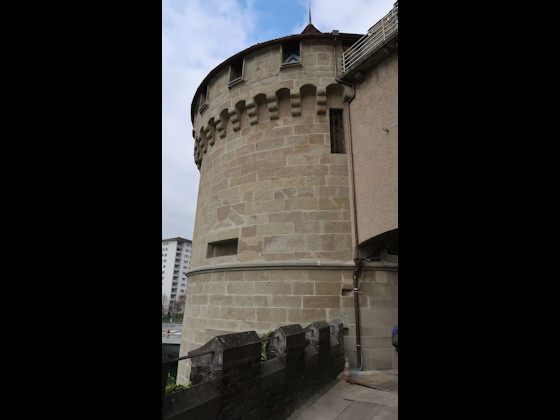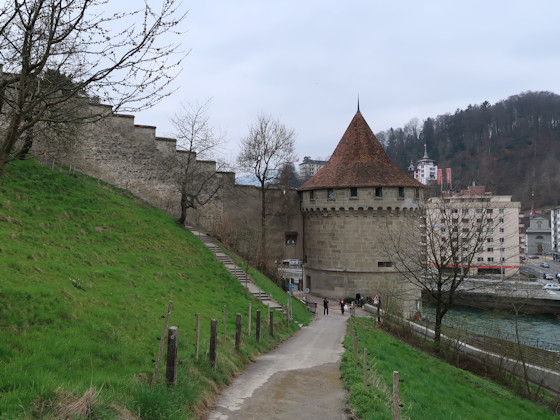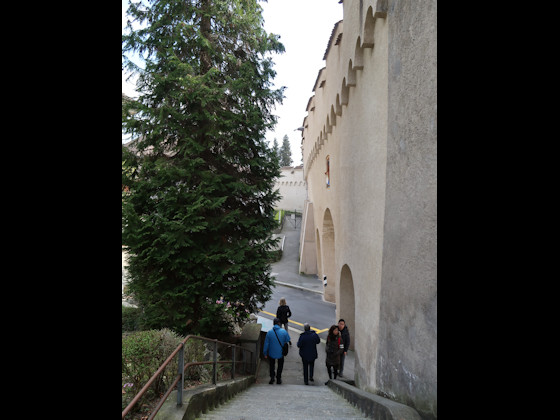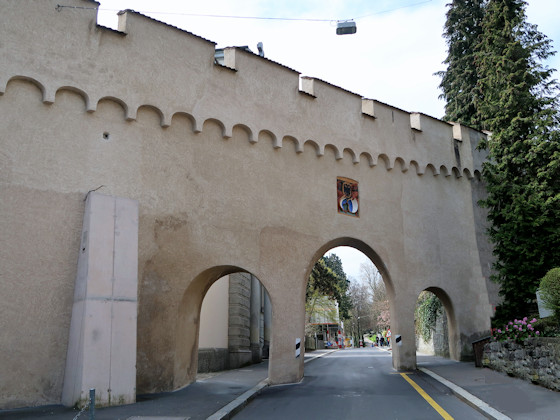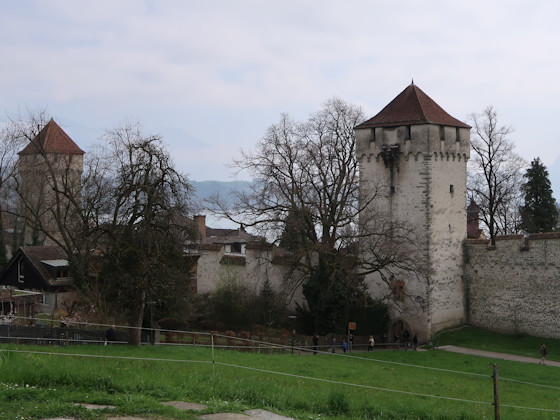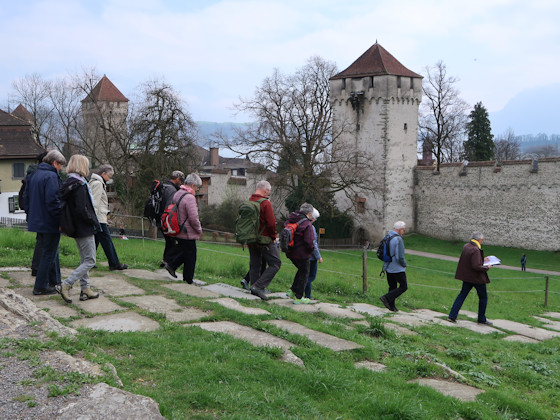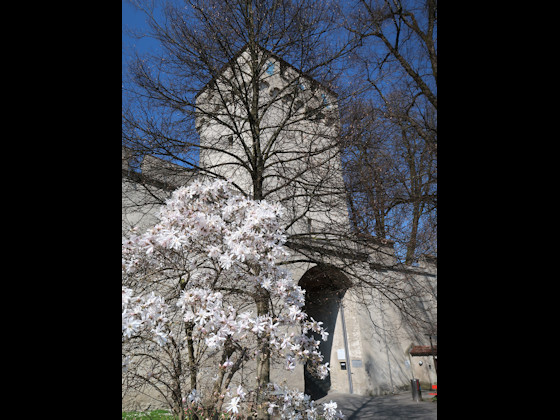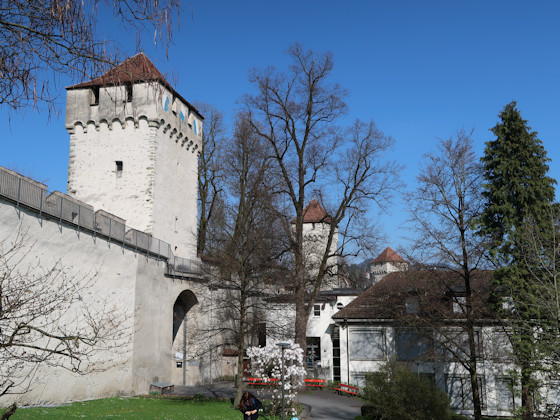City wall / Musegg wall
It is still completely preserved, except for the easternmost lost part of about 40 metres, and measures 870 metres in length. It is 1.5 metres thick on average; the height varies depending on the terrain, but averages around 9 metres. An uncovered battlement runs behind its battlements.
The battlements rise above an outwardly projecting brick, irregular round-arched frieze with angular and rounded brackets.
The wall has or had various gates.
Musegg Umgang (Walk arround)
The event always takes place in spring. In the Middle Ages, the town was ravaged by a great fire on a March day, and the town procession is a petition for protection against conflagrations and the danger of war. The great town fire of 1340 is therefore regarded by some historians as the beginning and reason for the church procession.
After the completion of the Musegg Wall in 1408, the path around the city underwent a considerable extension. The starting and end point of the walk was the Hofkirche. From here, the secular participants used the Hofbrücke and Kapellbrücke until the demolition of the Hofbrücke (1833-55), and since 1873 the Seebrücke to the Freienhof. The clergy, pupils, singers, musicians and the shrines were led from the Hof with Nauen to the ship's hut at the Freienhof. Then the procession walked along the old city wall (Hirschengraben) to the Sentivorstadt, where the Reuss had to be crossed a second time, which was done by means of a temporarily installed footbridge or a boat bridge. From time to time, the procession is also said to have been led over the Spreuer bridge to the other bank. Here a stairway led up to Brüggligasse below the Nölliturm, then the worshippers climbed a narrow path to the top of the Musegg, where a pilgrimage service was held in the open air (since the beginning of the 18th century at the Musegg Chapel built especially for this purpose), after which they continued along the path outside the Musegg walls, and finally passed the Great Saviour at the Weggistor to reach the Court Church (Hofkirche) again.
A special feature of Musegg's walk arround was the feeding of the clergy, the poor and lepers with fish from the town's own ponds and wine.
IIn the 18th century, the Musegger Umgang attracted thousands of pilgrims each year.
